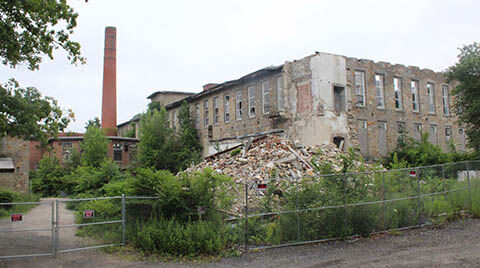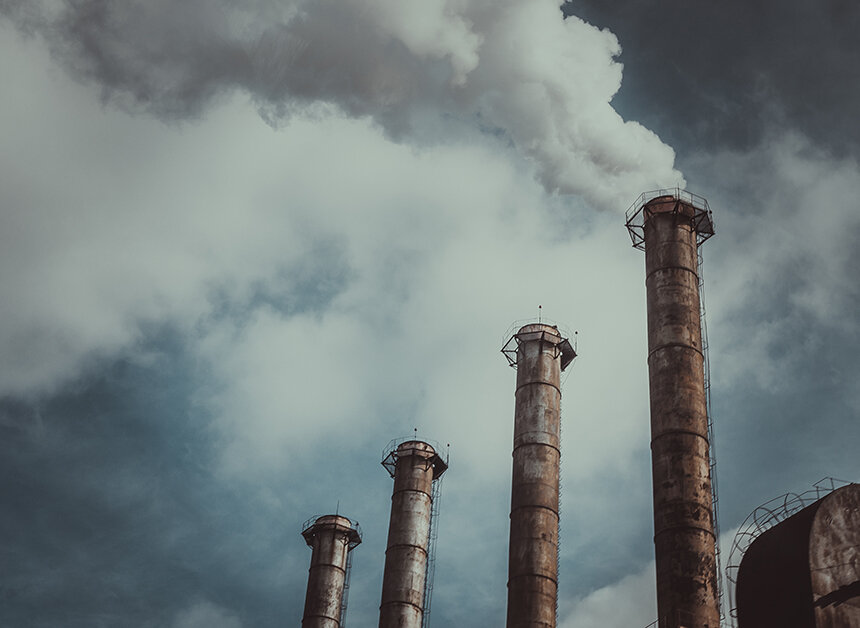Scituate’s Hope Mill Demolition Status Remains Uncertain
June 28, 2024
SCITUATE, R.I. — Residents in the village of Hope are frustrated as they watch the historic Hope Mill crumble with little information as to the mill’s future and the status of potentially dangerous chemicals stored at the site.
Many sections of the mill complex, parts of which date to the 1700s, have collapsed. The mill was slated for demolition in 2023, with work to finish in 2024, according to a news story.
Di Hopkins of Hope Mill Concerned Citizens (HMCC), an organization with more than 700 members formed in 2017, said her group is concerned about the mill’s fate, and as it decays, the effects of what might leach out of the building and into the nearby Pawtuxet River.
Town officials, she said, haven’t been forthcoming about what is next for the site, or about efforts to clean up the property.
“They don’t care about the residents here, or our health and safety,” she said.
Hopkins said Boston-based Paramount Development, which paid $1.3 million for the 38-acre property in June 2020, promised they would protect the historic building, but she has not seen any effort to do so.
“Paramount said they were very proud to save this historic mill,” Hopkins said. “Until the ‘90s, it was the oldest running textile mill in the country. Since then, they have not maintained it. They let the roofs crumble.”
BMP LLC took over ownership of the property in July 2020.
Hopkins and her group have long advocated for the site, which sits on the Pawtuxet River and has historic significance. The Hope Mill Village, which originally provided housing for the mill’s owners and workers, is listed on the National Register of Historic Places.
An iron furnace called the Hope Furnace was built at the site in 1766, shortly after the discovery of iron ore nearby in 1765. The factory produced household goods and pig iron and was contracted by the General Assembly to produce cannons and cannon balls during the Revolutionary War. Hope Furnace stopped production around 1801, and the property was sold to Silvanus Hopkins in 1806. Hopkins built the Hope Cotton Factory that same year, and the property changed hands several times before burning down in 1844. In its place, a large stone building with a belfry tower was constructed. In 1900, a 40,000-square-foot building was added to weave textiles and that business remained in operation until 2007.
Paramount proposed redeveloping the mill to include a 175-unit residential project that would include existing structures and add two new buildings. Those plans were approved by the town in April 2019. The project passed as a low- to moderate-income housing plan, including 70 low-income units in the development.
But nothing has been done at the site since, Hopkins said.
“Not one person replied to requests to know what’s going on,” said Natalie Parrillo, another member of HMCC. “We could go up there tomorrow and demolition could have started there. I feel like Paramount wanted to let this mill come down because they want to put two huge buildings behind there.”
Hopkins said the building is “incredibly unsafe,” and expressed concerns about pollutants running into the Pawtuxet River during heavy rains.
“All that pollution is going into the river. How is that possible?” she said.

According to a site investigation report for the property submitted to the state by the ESS Group on Dec. 17, 2021, a total of 14 building materials — i.e., caulking, glazing, and paints — were identified as potentially containing polychlorinated biphenyls (PCBs), human-made organic chemicals found in electrical equipment, paints, plastics, rubber products, pigments, and dyes, and which are known to cause adverse health effects. Twenty-eight samples were collected from the Hope Mill site for analysis, according to the report. Of those, PCBs were detected in 11 samples at concentrations ranging from 0.20 through 34.2 parts per million (ppm). The Environmental Protection Agency requires that PCBs found at levels above 50 ppm must be remediated.
“Based upon analytical results, Site historical information, and a visual assessment of representative building materials, it is ESS’ opinion that all materials containing measured concentrations of PCBs are considered ‘excluded PCB products’,” according to the report.
A remedial action work plan for the site dated Feb. 20, 2023, noted three underground storage tanks that had been removed from the property over the years had contained 10,000 gallons of No. 2 fuel oil; 20,000 gallons of No. 6 fuel oil; and 1,000 gallons of gasoline. The proposed remediation included soil excavation and a monitoring well to be installed where the underground tank that contained gasoline was located.
Evan LaCross, a spokesperson for the Rhode Island Department of Environmental Management, said, “The current owner of the property, BMP LLC, is responsible for remedying the myriad environmental violations at the site, which include wetlands, site remediation, and others administered through DEM’s Office of Compliance and Inspection.”
LaCross said the remedial action work plan is still under review by DEM and has not been approved.
He said DEM’s preferred remediation for the site would include: “focused soil excavation; the removal of soil within the property’s leach field footprint; encapsulation of all remaining contaminated soils by engineered controls subject to DEM’s approval; the isolation of certain freshwater wetlands areas on the site; and the collection and analysis of one additional groundwater sample for total lead to demonstrate consistent total lead concentrations below DEM’s GA Groundwater Objective.”
LaCross also said DEM recommended an environmental land use restriction on the property, which would restrict certain activities on the site and include a soil management plan.
“DEM remains in contact with the property owner’s attorney regarding addressing the immediate environmental response needs at the site to achieve final regulatory compliance,” LaCross said.
When HMCC reached out to Scituate zoning official Larry G. Desormier Jr. in November of 2023 via email regarding the demolition of the mill, he replied, “I am currently working with the owners to have everything in place for them to start the demolition process. I have spoken with DEM and they have informed me that the process can begin as soon as possible. And all remediation can be completed as required by their rules,” according to the email, which was forwarded to ecoRI News.
LaCross said, however, that DEM “did not permit the demolition of the structures at the property, as this is permitted locally through the Town.”
Desormier’s Scituate email address sent an automatic reply to a question from ecoRI News about the status of the mill’s demolition: “I will be out of the office until further notice.”
No other Scituate officials could be reached for comment.




I look forward to visiting the site on July 3, 2024